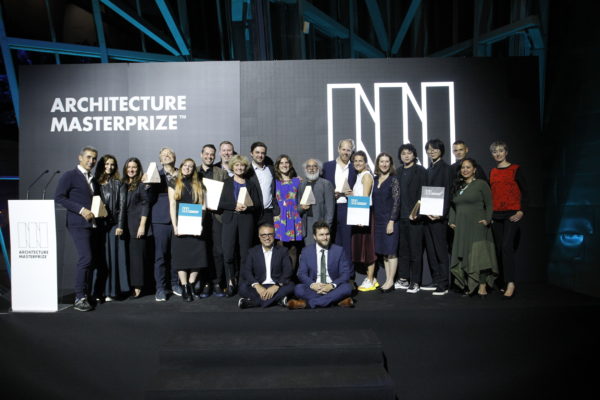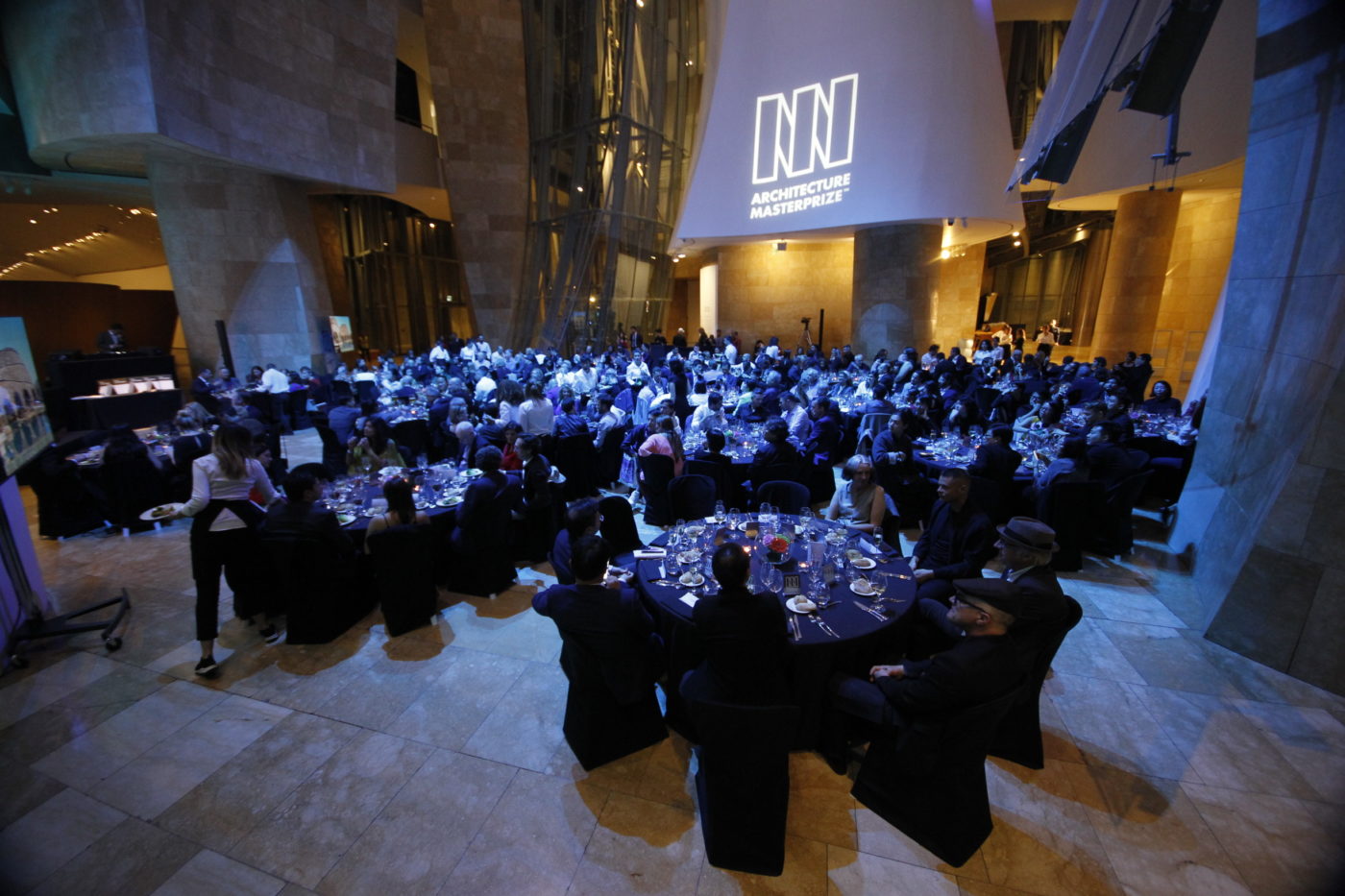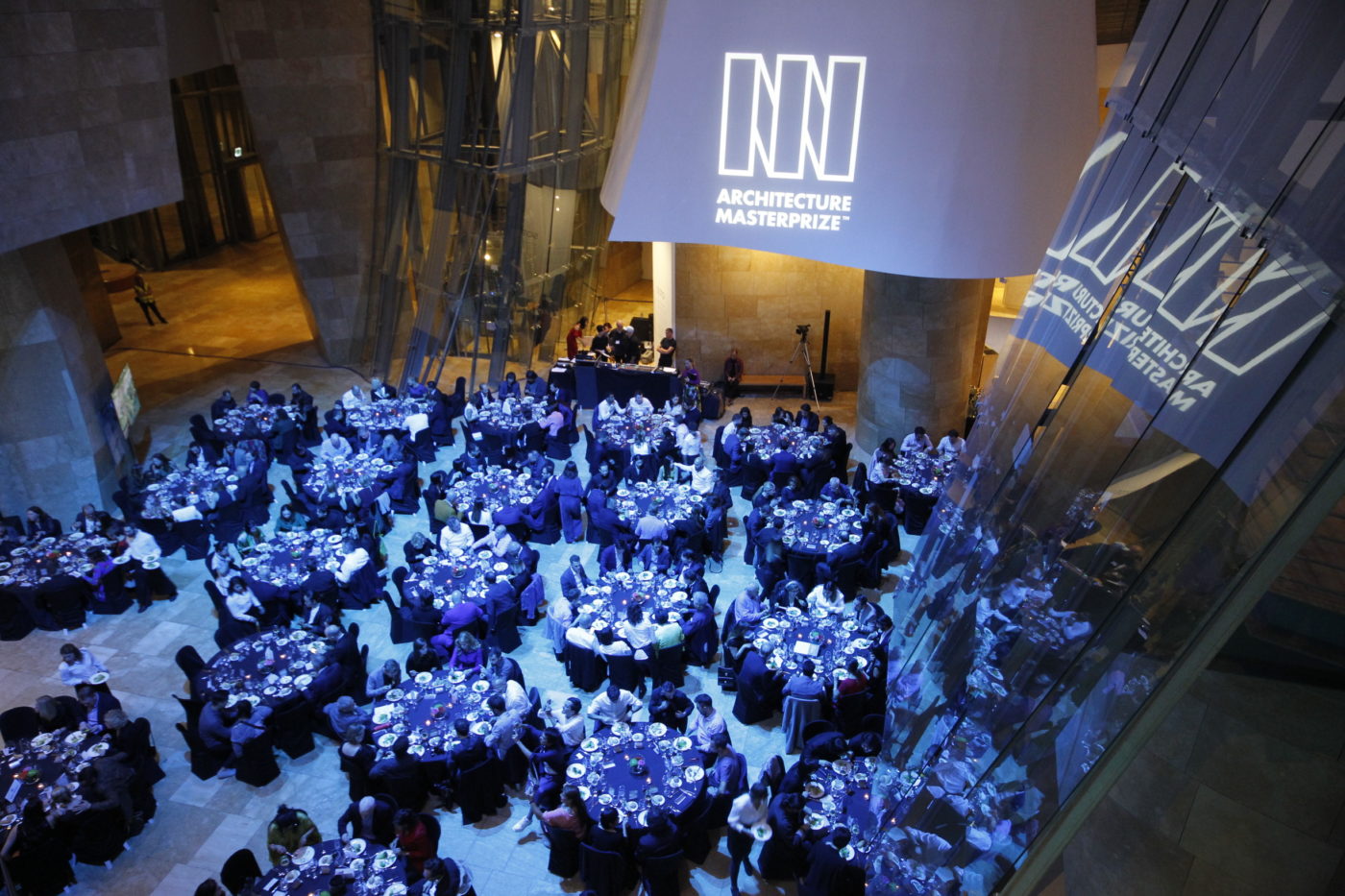Celebrating the world’s best architecture
The AMP Jurors have made their decisions and the Architecture MasterPrize is pleased to announce the winners of the 2020 edition of this prestigious award, in both professional and student categories.
The 2020 edition of the MasterPrize was again highly anticipated, with the largest number of entries since the award began. The standard of the projects was truly exceptional. Winners were selected from over 1,500 entries, with breathtaking designs presented from all around the world.
“The quality and content of projects entered into this fifth edition of the Architecture MasterPrize was spectacular! This award continues to showcase the best of Architecture from all around the globe. It is an honor to present and reward this fantastic collection of innovative, creative and inspiring architectural projects.”
AMP President, Hossein Farmani
Two programs were open this year, celebrating the greatest architectural designs and products of the year:
- Design of the Year Award
- Architectural Product Award
Four projects were chosen as top winners in each discipline and received the titles “Design of the Year” / ”New Discovery of the Year” in Architecture, Interior Design and Landscape Design, and “Architectural Product of the Year”, by the jury panel of renowned architects, academics and industry experts based on the criteria of design excellence and creativity.
For the first time this year, the jury also awarded the “Best Of Best” distinction to projects which were shortlisted for the Design of the Year title: 70 projects received this special mention.
The AMP 2020 Winners
Professional Top Winners:
- Architectural Design Of The Year: He Art Museum by Tadao Ando Architect & Associates
- Interior Design Of The Year: Nocenco Cafe by Vo Trong Nghia Co
- Landscape Design of The Year: Thammasat Urban Farm Rooftop by Landprocess
- Architectural Product of the Year: Thinline 2500 Sliding Door by Styline
Best of Best Winners Include:
- 18 Robinson by Kohn Pedersen Fox Associates
- Sculptural House by KON design
- South Haven Centre For Remembrance by SHAPE Architecture
- Museum Of Contemporary Art Helga De Alvear by Emilio Tuñón Arquitectos
- No Footprint House (NFH) by A-01
- White Deer Plain. Mountain Land Home Stay by Huiyimingcheng
- Puntukurnu Ams Newman Clinic by Kaunitz Yeung Architecture
- San Sa Village by IILab
- Casa Mi by Daluz Gonzalez Architekten
- Kohanceram by Hooba Design Group
- Laboratory For Shihlien Biotech Salt Plant by WZWX Architecture Group
- Yingliang Stone Natural History Museum by Atelier Alter Architects
… and more.
Winners will enjoy extensive publicity, showcasing their designs to a worldwide audience throughout the next year, and their designs will be featured in the AMP Book of Architecture, distributed globally. All Winners will receive the AMP Winner Certificate and Winner Seal, and are now featured on the Winners Gallery on the AMP website. Link to the Winners Gallery
Download the AMP 2020 PR package including high-resolution images, video content and information about the winners here.
——————————————————————————————————-
About Architecture MasterPrize™(AMP)
The mission of the AMP is to advance the appreciation of quality architectural design worldwide. Celebrating creativity and innovation in the fields of architecture, landscape architecture, and interior design, the prize is open to submissions on a global level, accepting entries from architects all around the world.
Winners are selected by the esteemed jury of architects and leaders in the architecture world, and will receive the AMP trophy, extensive publicity showcasing their designs to a worldwide audience, and more.
The Architecture MasterPrize™ was assembled by the Farmani Group as the sister initiative of the IDA International Design Awards, which has been recognizing and celebrating smart and sustainable multidisciplinary design since 2007.
About Farmani Group
The Farmani Group, established in 1985, is the organizer of International Design Awards (IDA), International Photography Awards, Prix de la Photographie in Paris, London International Creative Competition, and the Annual Lucie Awards for Photography, which has emerged as the world’s most prestigious photography awards.
The company’s key mission is to discover and promote talent in these areas through competitions, awards, exhibitions, developing artist communities, providing networking opportunities and education.
For more information:
https://architectureprize.com/
https://www.facebook.com/architectureprize/
https://www.instagram.com/architecturemasterprize/
For AMP Press Contact: Marcelina Horrillo – communicationsnewspr@gmail.com
The event celebrating the winners of the 2022 Architecture MasterPrize will return to the Guggenheim Museum Bilbao, Spain, on November 24, 2022.
Please stay tuned for more details, in the meantime enjoy some pictures from the Winners Gala in 2019:
As one of the most important events of the year in architecture, almost 300 guests from 150 architectural and design companies enjoyed the culinary creations of Michelin star chef Josean Alija from Nerua Restaurant, while Architectural Designs, Products and Firms of the Year winners received their trophies on stage.
All photos from the event can be found here: https://flic.kr/s/aHsmHHJEAf
List of companies that attended the Gala.



The event celebrating the winners of the 2018 and 2019 Architecture MasterPrize has taken place at the Guggenheim Museum Bilbao, Spain, on October 14, 2019.
As one of the most important events in architecture this year, almost 300 guests from 150 architectural and design companies enjoyed the culinary creations of Michelin star chef Josean Alija from Nerua Restaurant, while Architectural Designs, Products and Firms of the Year winners received their trophies on stage.
All photos from the event can be found here: https://flic.kr/s/aHsmHHJEAf
List of companies that attended the Gala.



Save the Date for the 2019 Architecture MasterPrize Gala!
The event celebrating the winners of the 2018 and 2019 Architecture MasterPrize will take place at the Guggenheim Museum Bilbao, Spain, on October 14, 2019.
This is a great opportunity to meet and network with some of the winners, jury members, and the AMP Team.
Be one of the 2019 winners, enter your best projects today and join us in October to celebrate innovation and creativity in architecture.
More details will be revealed soon, stay tuned.
Los Angeles, United States
The Architecture MasterPrize (formerly AAP), one of the most comprehensive architecture awards in the world, has announced this year’s winners: the most innovative, creative and inspiring architectural projects, firms and products from all over the globe.
Winners were selected from over a thousand entries from over 60 countries.
The AMP jury has selected the following three projects as the winners of The Architecture MasterPrize 2019, representing the 0.1% of all projects entered into the award program:
- Architectural Design Of The Year: The Retreat at the Blue Lagoon Iceland by Basalt Architects
- Interior Design Of The Year: Infinite Buildings by Jean-Maxime Labrecque
- Landscape Design of The Year: The Best of Youth
by Unlimited Metropolis Studio
Firm of the Year Award Winners:
- Architectural Firm of The Year: gad · line+ studio
- Interior Design Firm of The Year: OHLAB
- Landscape & Urban Design Firm of the Year: PLACE
Architectural Products of the Year:
- Product of the Year: Zospeum
- Product of the Year: AVANCIS PowerMax® SKALA – The Architectural PV
In addition to the top Designs, Firms and Products of the Year, winners from all over the world have been selected as sub-category winners. You can view all winners here.
The winners were selected by a panel of esteemed experts, architects, academics and industry experts. View the full jury panel here.
Winners are invited to Winners Gala at the Guggenheim Museum Bilbao on October 14, 2019. Winners will enjoy extensive publicity showcasing their designs to a worldwide audience throughout the next year, and their designs will be featured in the AMP Book of Architecture distributed globally.
About The AMP
The Architecture MasterPrize is based in Los Angeles, California with the mission to advance the appreciation of quality architectural design worldwide.
Los Angeles, United States
The Architecture MasterPrize (formerly AAP), one of the most comprehensive architecture prizes in the world, has announced this year’s winners: the most innovative, creative and inspiring architectural projects from all over the globe. Winners were selected from over a thousand entries from 68 countries in the 41 categories across the disciplines of architecture, interior design, and landscape architecture.
The AMP jury has selected the following three projects as the winners of The Architecture MasterPrize 2018, representing the 0.1% of all projects entered into the award program:
- Architectural Design Of The Year: American Copper Buildings by Shop Architects
- Interior Design Of The Year: Tokyo Tower Top Deck by Kaz Shirane Studio
- Landscape Design of The Year: The Sun Shed Renovation Practice by Mix Architecture
In addition to the top three Designs of the Year, winners from all over the world have been selected across 41 categories, which include:
- Kanda Terrace by Key Operation Architects in Commercial Architecture
- Kult – Kulturhistorisches Zentrum Westmünsterland by Pool Leber Architekten in Cultural Architecture
- Théodore Gouvy Theater by Dominique Coulon & Associés in Cultural Architecture
- Copenhagen International School – Nordhavn by C.F. Møller Architects in Educational Architecture
- Monash University Learning and Teaching Building by John Wardle Architects in Educational Architecture
- Day Care Center For People With Alzheimer’S Diseas by studioVRA in Healthcare Architecture
- Freycinet Lodge Coastal Pavilions by Liminal Architecture in Hospitality Architecture
- European Parliament by Jaspers-Eyers Architects in Instituional Architecture
- Salesforce Transit Center by Pelli Clarke Pelli Architects in Transportation Architecture
- Noso by Faci Leboreiro Arquitectura in Commercial Interior Design
- Lascaux International Centre for Cave Art by Casson Mannin in Exhibitions
- Setsugekka Japanese Cuisine by Shanghai Hip-pop Architectural Decoration Design in Other Interior Design
- Roemer Plaza, Suffolk University by Klopfer Martin Design Group in Educational Landscape Design
- Bamboo Gateway by West-Line Studio in Public Landscape Design
You can view all winners here.
The winners were selected by a panel of esteemed experts, architects, academics and industry experts. View the full jury panel here.
Winners will be invited to the bi-annual Winners Event taking place in 2019. Winners will enjoy extensive publicity showcasing their designs to a worldwide audience throughout the next year, and their designs will be featured in the AMP Book of Architecture distributed globally.
About The AMP
The Architecture MasterPrize is based in Los Angeles, California with the mission to advance the appreciation of quality architectural design worldwide.
The AAP was originally assembled by Farmani Group with a core mission to advance the appreciation of quality architectural design worldwide, and it has come a long way in the 3 years since its inception. Its influence in the field of architecture has grown exponentially as thousands of architects from all over the world have entered their work. The greatest projects have been distinguished and awarded by the illustrious international jury, and garnered recognition from the global media for their innovative and groundbreaking designs.
We are thrilled with the way AAP has been received by the architectural community and beyond, and we believe that it is time for our name to reflect the global vision — to bring together the best and brightest in architectural design from all corners of the world and shine a spotlight on the greatest achievements.
Therefore, AAP has now been reborn as Architecture MasterPrize. We believe this name represents the mastery, excellence, creativity and innovation exhibited in all the visionary works that have been entered to win this prize from all over the world.
Architecture MasterPrize stands for the same core values that brought AAP to the global forefront in this arena:
– To advance the appreciation of quality architectural design around the world,
– To celebrate the greatest achievements in architecture, interior design and landscape design,
– To showcase the world-class talent and visionaries in these fields.
The MasterPrize recognizes those individuals and teams who push boundaries and set new standards; who turn the ordinary into the truly extraordinary and inspire others, today and for generations to come.
The 2018 program is open for entries now, register here.
The sister program of AMP is also launching soon, the INT Interior Design Awards, the most comprehensive international interior design award program.
We are very pleased to announce that the 2017 AAP winners’ book is now available to order on Amazon, shipping worldwide.
Click here to order from Amazon.
Or order from our webshop directly.
This book celebrates and honors the greatest architectural works from all over the world. It showcases the winning projects of the 2017 AAP Architecture Prize and 2017 Firm of the Year award.
View photos from the Winners Event at the New Museum on October 27, 2017 on the AAP Flickr. Over 250 guests celebrated innovation and creativity in architecture.
The AAP 2017 book will be available on Amazon, shipping globally in November 2017.
Winners of the 2017 AAP Architecture Prize Announced
Los Angeles, United States, 2017-10-09
The AAP Architecture Prize, one of the most comprehensive architecture prizes in the world, has announced this year’s winners: the most innovative, creative and inspiring architectural projects from all over the globe. Winners were selected from over a thousand entries from 68 countries in the 41 categories across the disciplines of architecture, interior design, and landscape architecture.
The AAP jury has selected the following three projects as the winners of The AAP Architecture Prize 2017, and to be awarded the AAP Trophy at the Winner’s Event in New York City on October 27, 2017:
- Architectural Design Of The Year: Hengqin International Financial Center by Aedas
- Interior Design Of The Year: The Attic—Flamingo Shanghai Office by Neri&hu Design and Research Office
- Landscape Design of The Year: Barangaroo Reserve by PWP Landscape Architecture
In addition to the top three Designs of the Year, winners from all over the world have been selected across 41 categories, which include:
- Bahá’í Temple of South America by Hariri Pontarini Architects in Cultural Architecture
- The Wedge by A-lab in Commercial Architecture
- 529 Broadway by Todd Poisson AIA/BKSK Architects in Commercial Architecture
- Chengdu City Music Hall by Andrew Bromberg at Aedas in Educational Buildings
- Värtan Bioenergy CHP Plant by Urban Design & Gottlieb Paludan in Green Architecture
- Centre hospitalier de l’Université de Montréal by Jose Silva, AIA in Healthcare Architecture
- Telegraf 7 by BEHF Architects in Heritage Architecture
- Gemma Observatory by Anmahian Winton Architects in Institutional Architecture
- Upper East Side Residences by Gabellini Sheppard Associates in Residential Interior Design
- Microsoft House by Lombardini22/DEGW in Interior Design/Workplaces
- The Regenstein Learning Campus—Chicago Botanic Garden by Mikyoung Kim Design in Educational Landscape Architecture
- Buffalo Bayou Park by Swa Group in Large Scale Landscape Projects
This year for the first time, the AAP also recognized architectural firms for their total body of work over their lifetime, and awarded the AAP Firm of the Year titles to the following companies, who will also be presented with the AAP Trophy:
- Architectural Firm of The Year 2017: Allford Hall Monaghan Morris
- Interior Design Firm of The Year 2017: Kossmann.dejong
- Landscape & Urban Design Firm of the Year 2017: PFS Studio
Other firms awarded in the Firm of the Year 2017 program included:
- Desai Chia Architecture—Small Firm of the Year Award in Multi-Disciplinary Architecture
- Rob Mills Architecture & Interiors—Medium Firm of the Year Award in Residential Interior Design
- Atelier Central, arquitectos —Medium Firm of the Year Award in Multi-Disciplinary Architecture
- CHANG Architects—Small Firm of the Year Award in Residential Architecture
You can view all winners here.
The winners were selected by a panel of esteemed experts including Peggy Deamer, Professor of Architecture at Yale University; Troy C. Therrien, Curator of Architecture and Digital Initiatives at the Guggenheim Foundation and Museum; Ben Van Berkel, Principal of UNStudio and Professor at Harvard University Graduate School of Design; Philip Stevens from Designboom, Joshua Jih Pan, FAIA from J.J. Pan and Partners, Leone Lorrimer from dwp | design worldwide partnership, Elisa Burnazzi from Burnazzi Feltrin Architects, Jennifer Siegal from Office of Mobile Design (OMD) and many more. View the full jury panel here.
“It has been a privilege to receive such exceptional entries competing for the AAP this year. Every submission is outstanding in its own way. All these entries from accomplished architects and architecture firms give us the opportunity to not only promote amazing designs, but also to marvel together at the evolution of architecture, interior design and landscape architecture across the globe.” said AAP President Hossein Farmani.
Winners are invited to the Winners Event taking place at the Sky Room at New Museum in New York City on October 27, 2017. Winners will enjoy extensive publicity showcasing their designs to a worldwide audience throughout the next year, and their designs will be featured in the AAP Book of Architecture distributed globally.
About The AAP
The AAP Architecture Prize is based in Los Angeles, California with the mission to advance the appreciation of quality architectural design worldwide.